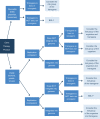Gene Replacement Therapy: A Primer for the Health-system Pharmacist
- PMID: 31248331
- PMCID: PMC7675776
- DOI: 10.1177/0897190019854962
Gene Replacement Therapy: A Primer for the Health-system Pharmacist
Abstract
Purpose: Comprehensive review of gene replacement therapy with guidance and expert opinion on handling and administration for pharmacists.
Summary: There are currently ∼2600 gene therapy clinical trials worldwide and 4 Food and Drug Administration (FDA)-approved gene therapy products available in the United States. Gene therapy and its handling are different from other drugs; however, there is a lack of guidance from the National Institutes of Health (NIH), FDA, Centers for Disease Control and Prevention (CDC), World Health Organization (WHO), and professional associations regarding their pharmaceutical application. Although the NIH stratifies the backbone biologicals of viral vectors in gene therapies into risk groups, incomplete information regarding minimization of exposure and reduction of risk exists. In the absence of defined guidance, individual institutions develop their own policies and procedures, which often differ and are often outdated. This review provides expert opinion on the role of pharmacists in institutional preparedness, as well as gene therapy handling and administration. A suggested infrastructural model for gene replacement therapy handling is described, including requisite equipment acquisition and standard operating procedure development. Personnel, patient, and caregiver education and training are discussed.
Conclusion: Pharmacists have a key role in the proper handling and general management of gene replacement therapies, identifying risk level, establishing infrastructure, and developing adequate policies and protocols, particularly in the absence of consensus guidelines for the handling and transport of gene replacement therapies.
Keywords: biosafety; gene therapy; hospital pharmacy services.
Conflict of interest statement
Figures

References
-
- Smith TJ. Gene therapy: opportunities for pharmacy in the 21st century. Am J Pharm Ed. 1996;60(2):213–215.
-
- American Society of Gene and Cell Therapy. Gene and cell therapy FAQ’s. 2018. Accessed November 28, 2018 https://www.asgct.org/education/gene-and-cell-therapy-faqs
-
- Dunbar CE, High KA, Joung JK, et al. Gene therapy comes of age. Science. 2018;359(6372):eaan4672. - PubMed
-
- Stoner N. Gene therapy applications. Clin Pharm. 2009;1:270–273.
Publication types
MeSH terms
Substances
LinkOut - more resources
Full Text Sources

